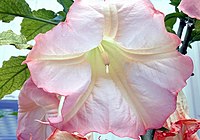
Autopolyploidy in Chrysanthemum cv. ‘Gongju’ Improved Cold Tolerance
Sign Up to like & getrecommendations! Published in 2020 at "Plant Molecular Biology Reporter"
DOI: 10.1007/s11105-020-01225-y
Abstract: A total of 120 nodal segments of Chrysanthemum ‘Gongju’ plantlets were treated with colchicine to obtain autopolyploidy. Flow cytometry showed that 1 of the 12 surviving seedlings had DNA contents that were twice that of… read more here.
Keywords: chrysanthemum gongju; tetraploid plants; octoploid plants; plant ... See more keywords

Comparative microsporogenesis between diploid and tetraploid plants of Brachiaria ruziziensis and their progenies
Sign Up to like & getrecommendations! Published in 2018 at "South African Journal of Botany"
DOI: 10.1016/j.sajb.2018.09.018
Abstract: Abstract Microsporogenesis studies in Brachiaria have been concentrated in the species B. ruziziensis, B. decumbens and B.brizantha and hybrids because they have great importance as forage. Besides the sexual behavior, B. ruziziensis is among a… read more here.
Keywords: microsporogenesis; tetraploid plants; microsporogenesis diploid; diploid tetraploid ... See more keywords

A comparative study of characteristics in diploid and tetraploid Anoectochilus roxburghii
Sign Up to like & getrecommendations! Published in 2022 at "Frontiers in Nutrition"
DOI: 10.3389/fnut.2022.1034751
Abstract: Artificial induction of polyploidy is an efficient technique for improving biological properties and developing new varieties of many plants. In this study, we analyzed and compared differences in characteristics (morphological and biological) of diploid and… read more here.
Keywords: diploid tetraploid; anoectochilus roxburghii; roxburghii; tetraploid anoectochilus ... See more keywords

Agro-Morphological and Cytogenetic Characterization of Colchicine-Induced Tetraploid Plants of Polemonium caeruleum L. (Polemoniaceae)
Sign Up to like & getrecommendations! Published in 2022 at "Plants"
DOI: 10.3390/plants11192585
Abstract: Polemonium caeruleum L. (Polemoniaceae) is a valuable medicinal herb with a wide spectrum of biological activities. Under natural conditions, the productivity of this species is rather low. In this study, colchicine-induced tetraploid plants (2n =… read more here.
Keywords: polemonium caeruleum; caeruleum polemoniaceae; colchicine induced; caeruleum ... See more keywords